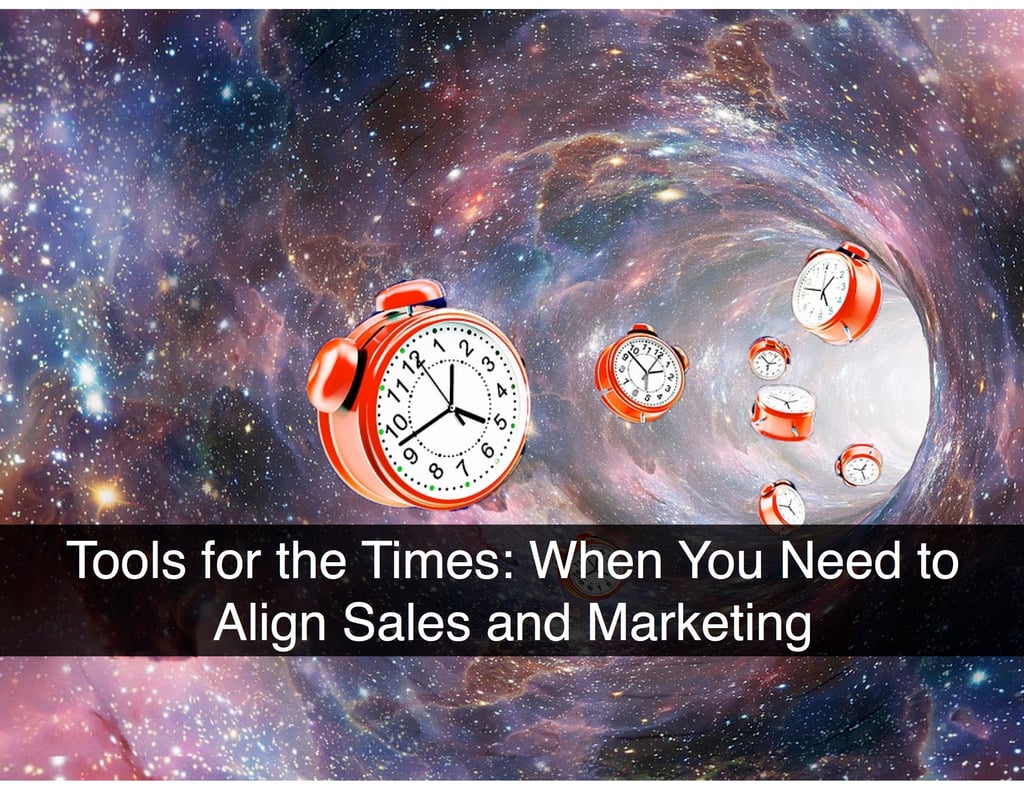
The ancient Greek philosopher Heraclitus is credited with saying, “There is nothing permanent except change.” This adage is certainly true centuries later, especially with regard to technology and its impact on today’s sales and marketing organizations.
A recent article from Deloitte Insights published by the Wall Street Journal, How Marketing and Sales Can Align to Drive Growth, does a great job detailing the evolving interplay between sales and marketing. Responsibilities and expectations for each group have both shifted and expanded, in part because of technology and a greater focus on the customer experience.
The deployment of value selling tools has also changed the buying and selling process, giving sellers more opportunities to engage with prospects and customers in more meaningful ways. This technology allows sellers to nurture relationships with engaging content throughout the sales cycle, and acquire insights into customer needs and preferences, buying habits, and other behaviors that influence purchase decisions.
This article by Tom McAleer and Mark Singer explores how digital technologies support marketing and sales teams in aligning with shared goals and positioning the organization for greater sales success. Although some of its examples reference consumers, its guidance is equally valuable for B2B sales.
Clarify Roles and Responsibilities
It used to be that marketing leaders focused on branding, messaging, and generating qualified leads, and sales leaders were responsible for generating sales. The lines are blurred now, as marketing leaders are increasingly responsible for driving growth, creating value, and improving margins. Sales still has to close the deal and often takes a more active role in customer engagement to build and strengthen those relationships, but marketing is expected to support the complete sales effort through to close.
In this new environment, marketing and sales cannot operate independently with different goals and performance metrics. Achieving business objectives requires aligning everyone’s activities around common goals, such as increasing revenue or improving lead generation and conversion rates by an agreed-upon percent.
Value selling tools make it easy to collaborate and measure progress on these common goals. And when used at different points in the sales cycle, all teams can understand customer and marketplace expectations, and improve the organization’s ability to meet those needs.
Leverage Digital Technology to Personalize Engagement
From marketing automation and content management to value selling tools, digital technologies allow companies to shape, communicate, and manage their brand message. This digital content can be pushed through social media channels and readily consumed on mobile platforms to help buyers assess their issues and evaluate potential solutions.
Value selling tools are ideal for personalizing digital engagement throughout the buying cycle, and providing buyers and sellers with valuable data that accelerates sales. Here’s what they can do for you.
-
Promote Customer Engagement. By their very nature, value selling tools engage customers with interactive content. When promoted via social media or online advertising, assessment tools and value calculators are excellent points of entry that can dynamically generate personalized content and convert users that click through to richer content. This results in more qualified leads that satisfy both marketing and sales objectives.
-
Demonstrate Solution Value. A well-designed assessment tool can help buyers evaluate whether a vendor’s solution addresses their most pressing issues. Other tools can help determine whether the cost and value will be worth the investment. With these insights, buyers are more likely to further engage and move the deal forward.
-
Clarify Customer Needs. Marketing can readily mine the data collected by assessment tools to learn more about buyers and market trends. The tool seamlessly collects data around buyer demographics, common business problems, and their measurable financial impact. This allows marketing and sales to identify target markets, refine strategies, and strengthen the product roadmap.
-
Close the Deal. If there’s one thing CMOs and CSOs can appreciate, it’s a happy customer signing on the dotted line. When utilized throughout the sales cycle, value selling tools combine effective lead generation tools with tools designed to help you build a better business case tailored for each prospect’s company and close more sales.
Conclusion
To drive growth, begin by clarifying and aligning the roles and objectives of your marketing and sales teams. The strategic deployment of value-driven tools alongside other digital technology further establishes clear guidelines for collaboration, and facilitates more effective and personalized customer engagement throughout the sales process.
Value selling tools play a significant role in the customer experience and how they perceive your company and your product. By leveraging the right technologies to align sales and marketing, you can optimize your brand messaging and influence customer behavior to generate and close more business.









